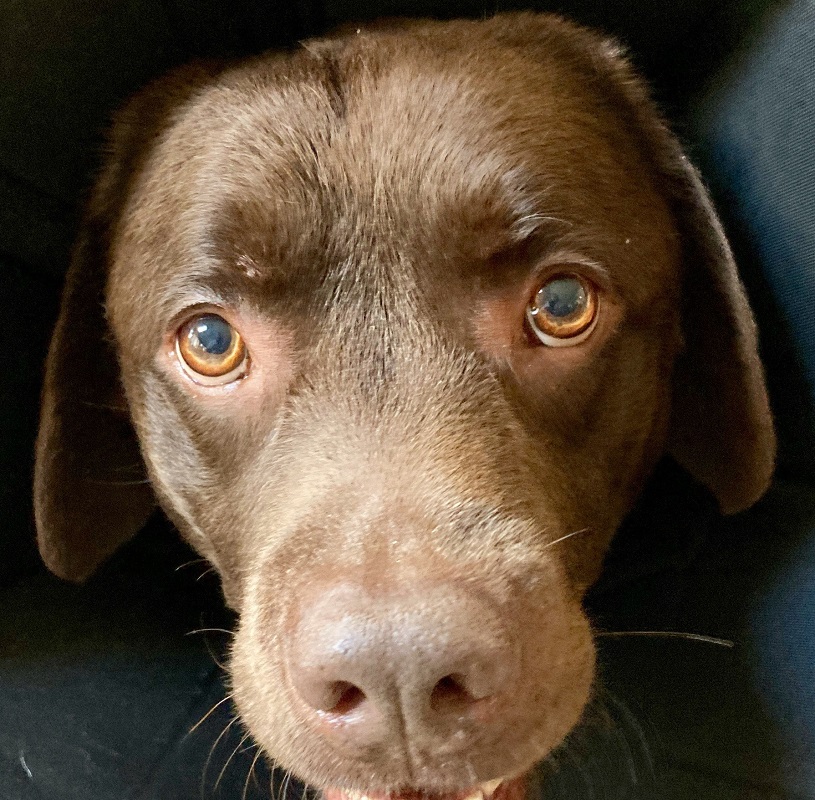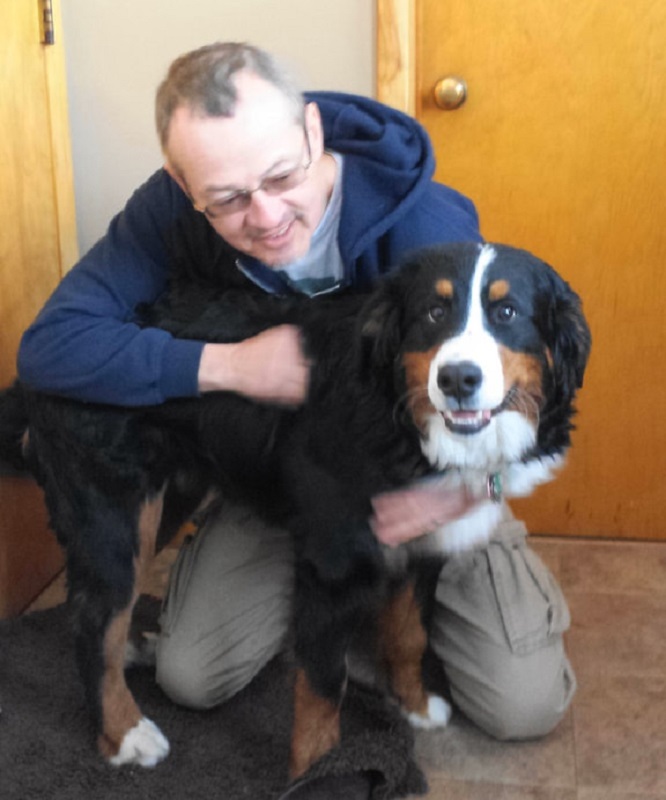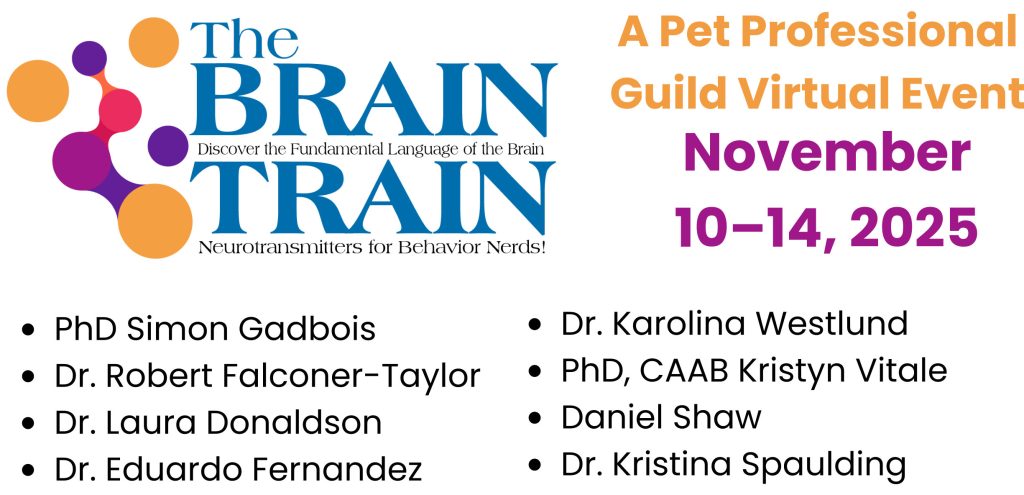Pets and Their People Blog
Easing My Dog’s Stress at the Veterinary Clinic
Let’s start with a show of hands. Who enjoys going to the doctor or dentist’s office? Well, our pets probably feel the same way, so what can we do to help them?
In 2016, Zazie Todd, Ph.D. wrote “Canine Stress in the Vet’s Waiting Room” and cited a study identifying the percentage of dogs who experienced stress while at a veterinary clinic. If a dog is not conditioned to enjoy visiting the clinic, it does not surprise me that the couple of visits per year when a dog is handled and restrained by “strangers” and then poked and prodded would result in a negative conditioned emotion response and stress signs.

(Photo by Patty Brito on Unsplash)
A Case in Point
My wife and I adopted our dog Bruno when he was five and one-half years of age. He is an energetic, playful, and strong Labrador…but he is very sensitive to pain. Imagine if Arnold Schwarzenegger cried, “Ouchies!” when he received an injection, and you will know how I felt hearing Bruno cry out at his first veterinary visit shortly after adoption.
I set about conditioning him to feel happy about visiting our veterinary clinic.
We began making social visits to the clinic and I wore my dog training treat bag, filled with goodies that Bruno craved.
I drove to the clinic, and he got treats as we entered the parking lot. Then he was let out to sniff the lawn and found more treats that I tossed when he was not looking. Next, we entered the clinic and he found more treats scattered on the floor. I cued him to touch the palm of my hand, held over the scale, and he got more treats for stepping onto the scale. Finally, staff members gave Bruno affection and more treats, and then we went home.
There was no stress, no restraint, no poking and prodding, and no painful needles. We repeated this fun game several more times prior to the next scheduled visit, and then I brought even more tasty food with me so when Bruno was being handled by veterinary staff, he received abundant goodies.
Reducing Stress at the Veterinary Clinic
More options were available to me to make his vet visits comfortable. We could prepare by working together on cooperative care training for grooming and health procedures. Additionally, I have an iCalmDog MP3 music player loaded with classical piano music played to match an adult dog’s resting heart rate. (This bioacoustic approach has been shown in studies to reduce stress barking in shelters and vet clinics.) I could also put an ADAPTIL® collar on Bruno, and/or spray my clothing with ADAPTIL, or bring a diffuser with me to plug into an electrical outlet in the treatment room. Another option would be to give him Zylkene® with food prior to our appointment. If he suffered more serious anxiety, I could ask my veterinarian about prescribing a fast-acting antianxiety medication to give him 90-minutes or so before our appointment.
In Bruno’s case, wonderful food was sufficient, but those sharp needles still elicited a woeful yelp.
We’re in This Together
Then one morning in August I discovered a “hotspot” on his tail. None of my previous dogs ever had hotspots and I was dismayed to see a half-dollar sized circle of raw skin near the base of his tail. Using WebMD as a reference, I read that hotspots could reach the size of a pancake as dogs continue licking the wound, likely leading to infection and pain.

getting worse.
(©D. Antolec)
I called my vet clinic and made the soonest appointment possible, knowing it was likely that his tail would need to be shaved around the wound and that the injury site would need to be handled and cleaned, likely causing discomfort. My heart sank as I made the appointment that I knew would stress my dog, but was necessary for his health.
We had to wait one day for the appointment and in that time, I saw the wound grow, and witnessed pain responses. I let Bruno out in the morning to go potty and he trotted onto the lawn as usual but as soon as he relieved himself, he began screaming in pain! When he returned to our home and walked up the steps, my leg gently brushed against the end of his tail, and he screamed in pain again. Clearly, the injury was getting worse and my anxiety about our upcoming veterinary appointment grew.
When we set out to the clinic for his treatment, I brought a plastic syringe filled with liver paste, a high-value food that Bruno craved. I did not think it would nullify the discomfort, but I hoped it would distract and calm him/us through the procedure.
Sometimes, You Just Have to Do the Best You Can
My veterinarian is an experienced professional and a kind human being, just the sort of person I want to care for Bruno. He recommended the shaving and cleansing process that I anticipated and summoned two vet techs to assist. My role was to provide close and constant support for Bruno, and to put the syringe to his mouth and provide a steady supply of liver paste while his tail was handled.
The process seemed to me to last an eternity, but it ended in conjunction with the last of the liver paste. Eventually, we went home with two medications to help Bruno heal.
As we drove home, I wondered if Bruno would have a negative conditioned emotional response to the experience, and if I would need to do a counterconditioning process to regain his optimistic expectation when we next returned to the clinic.
The Road to Success Is Paved with Food

Two weeks later, we returned for an important vaccination, and I took Bruno to the clinic with a plan to help him, and a supply of pork chop bits and another syringe filled with liver paste.
Bruno was excited to see that I was wearing a treat bag filled with goodies, and he dismissed the toy I brought along for the visit. That was a good sign.
Once parked, we walked about the lawn and Bruno sniffed and explored, activating the seeking system in his brain, which in turn promoted the release of dopamine. We were on the right track!
I enhanced his joyful experience by tossing pork into the grass so he could forage and keep the happy neurotransmitters and hormones busy.
Once we entered the clinic, I scattered more pork on the floor, and then played the familiar Touch game on the scale. Bruno was a happy camper, and he led the way to the treatment room. Once inside, we played more training games, and Find It. When the veterinary technicians entered the room, I handed pork to them and they hand fed Bruno, who loved every moment.
The time came for Bruno’s injection, and I reminded the vet techs that he was very sensitive to needles. One technician hugged Bruno while expressing pleasant affection toward him. And I kneeled in front of him, giving him access to the syringe of liver paste and kept pressing the plunger, so he had a steady supply.
I could not see whether the other vet tech had given the injection and saw no wince in Bruno’s expression, nor any vocalization.
Before I knew it, the task was done, the syringe was empty, and Bruno was in a happy mood.
Success!

About the Author
Daniel H. Antolec, PCT-A, CCBC-KA, CPDT-KA began teaching dogs in 2011 and founded Happy Buddha Dog Training. He teaches dogs in a way that makes it fun for pet stewards and pets alike.
Cooperative Veterinary Care Resources:
Cooperative Care in Veterinary Medicine (2024). Veterinary Partner-VIN.
Mariti, C., Raspanti, E., Zilocchi, M., Carlone, B., & Gazzano, A. (2015). The assessment of dog welfare in the waiting room of a veterinary clinic Animal Welfare, 24 (3), 299-305 DOI: 10.7120/09627286.24.3.299
Pat Miller and Dr. Leslie Sinn, (2023). Ebook: Veterinary Cooperative Care: Enhancing Animal Health Through Collaboration with Veterinarians, Pet Owners, and Animal Trainers
Todd, Z. (2016). Making Vet Visits Less Stressful is Essential, and Here’s What We Can Do to Help Dogs

